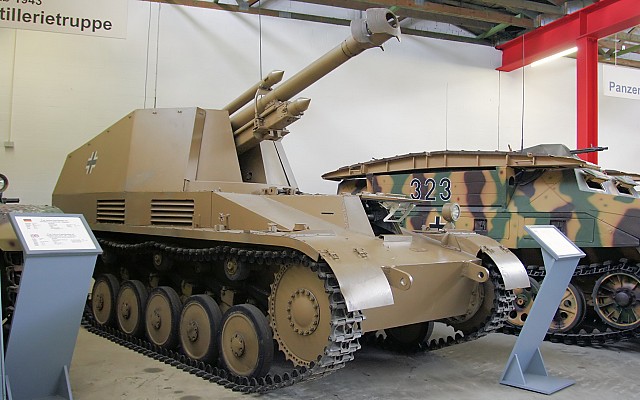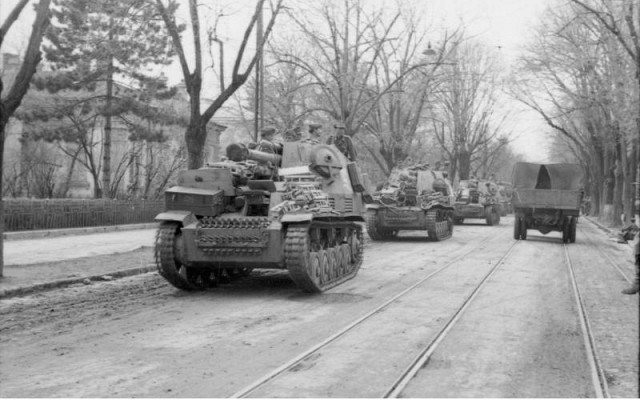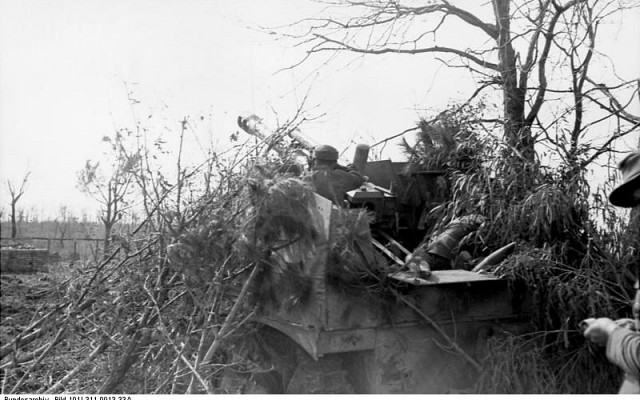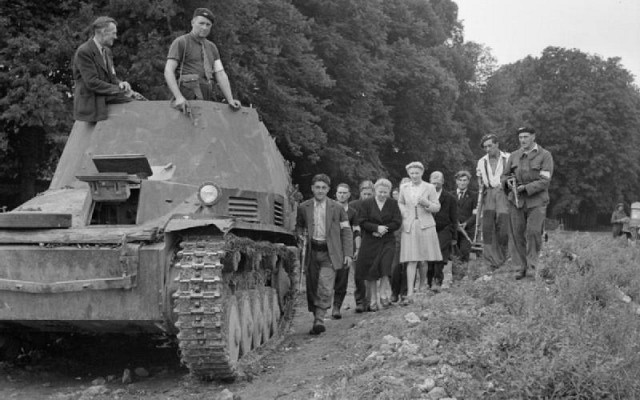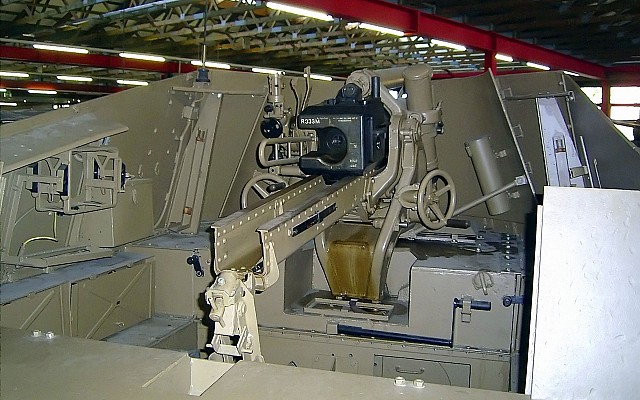Wespe
Sd.Kfz. 124
Overview
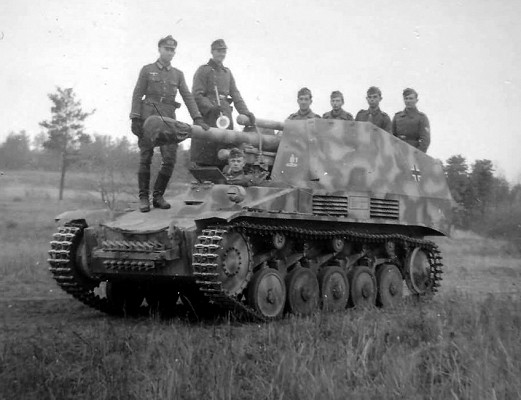
Wespe
Wespe self-propelled howitzer in the field.
Source: Unknown author -
© Copyright lies with original owner
158 Munitionsträger
Official nickname, German for "wasp"
Leichte Feldhaubitze 18/2 auf Fahrgestell Panzerkampfwagen II (Sf.)
Official designation
Sd.Kfz. 124
Description
Introduction
The Wespe is a self-propelled howitzer of Nazi German origin. It was widely used during the last years of World War 2. The Wespe was developed to provided mobile indirect fire support for armored units. It was developed at the same time as the larger Hummel, which is armed with a larger caliber howitzer.
Layout
The Wespe is based on the chassis of the Panzer II Ausf. F. The Panzer II was a reliable vehicle, but in the later stages of World War 2 no longer relevant in combat as a tank. The chassis is modified by making it longer and moving the engine to the middle. The ordnance is mounted in the middle of the vehicle and operated from the open roof rear compartment.
Firepower
The Wespe is armed with the 105mm leFH-18/2 howitzer. This 28-caliber howitzer with muzzle brake is similar to the towed variants, of which over 22.000 were produced. A total of 40 rounds of ammunition are carried. The maximum effective range is 12.3 km. The rate of fire is about 4 rpm.
Protection
The Wespe is an armored vehicle, but is not meant for frontline warfare. The steel armor protects the crew from small arms fire and shell splinters. The rear compartment has no roof, leaving the majority of the crew somewhat exposed.
Mobility
The Panzer II chassis was proven and reliable. The small size makes the vehicle somewhat cramped. The upside is the limited fuel consumption compared to larger vehicles. A Maybach petrol engine provides up to 140 hp. This allows of a maximum speed of 40 km/h and an operational range of about 220 km.
Users
The Wespe was produced in 1943 and 1944, with well over 600 vehicles produced. The production of the Wespe ended earlier than the Hummel. The main reasons are the lack of Panzer II production and less effectiveness than the more powerful and spacious Hummel. These mostly operated in support of panzer divisions. Two batteries with each 6 Wespe combined with 6 Hummels would make up a battalion.
Details
Media
Related articles
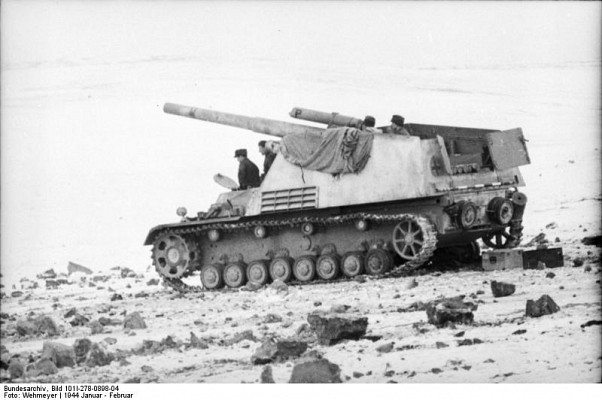
Hummel
The Wespe served alongside the larger and more powerful Hummel. The combination of these vehicles provided tank formations with mobile fire support.
